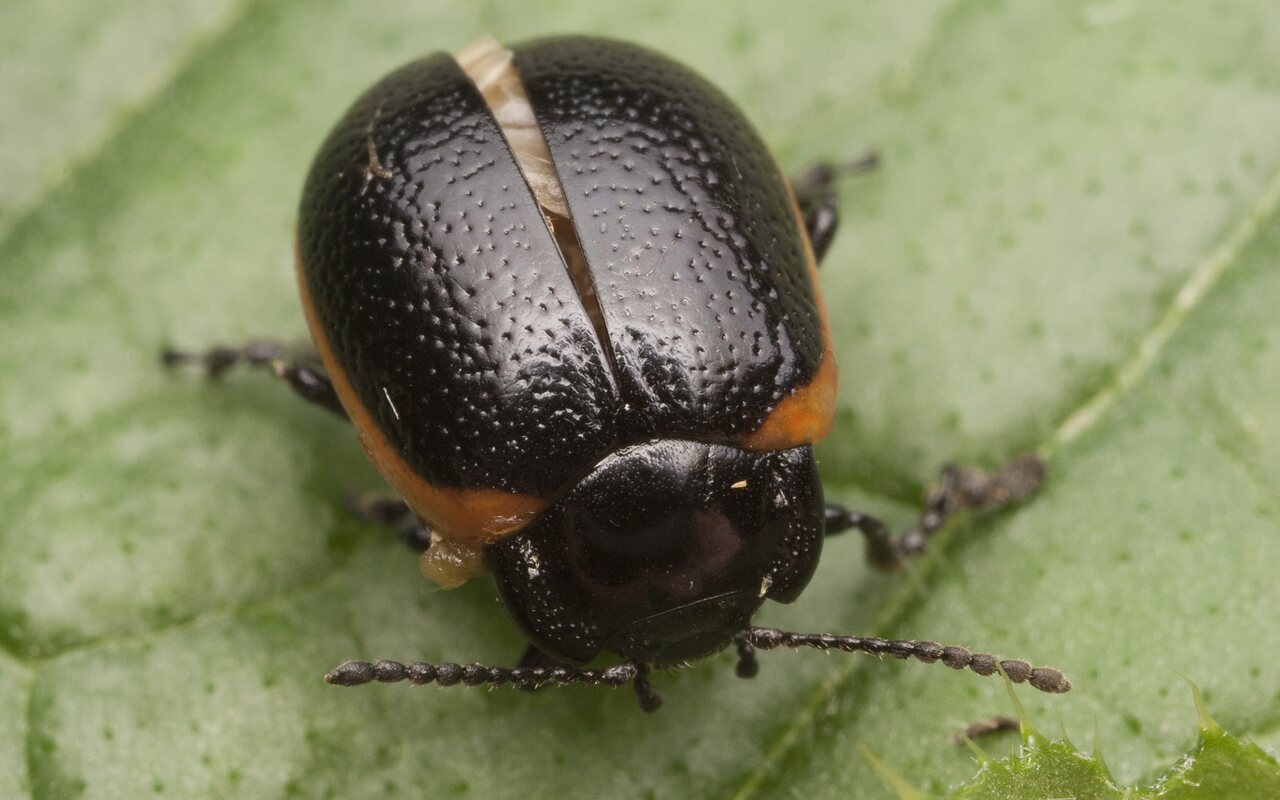
Chrysolina sanguinolenta · linažolinis puošnys
- Toadflax Leaf Beetle
- Rotsaum-Blattkäfer, Blutiger Blattkäfer
- linažolinis puošnys
- złotka lnicowa
ukbeetles.co.uk/chrysolina-sanguinolenta It occurs from Portugal to Turkey and east to Mongolia; north to Southern Scandinavia and south to Morocco, Algeria and The Canary Islands.
Host plant: common toadflax (Linaria vulgaris). Oviposition begins in April and continues into late summer; eggs are laid on the foliage of the host and generally hatch after a week or so. The larvae develop quickly, with each of the four instars lasting about a week, and when fully developed they descend the stem and pupate in a subterranean cell; the combined prepupal and pupal stages are completed within two weeks and adults begin to eclose during May, continuing to appear through the summer and so eggs, larvae and adults may occur on the same plant. These new generation adults will overwinter among grass tussocks, moss and litter etc. and become active the following spring when they will breed, but this generation will usually die off before the next one appears. There are two peaks in adult abundance; April and May, and then again in August and September. It is thought the species is incapable of flight due to degeneration of the flight muscles despite most specimens being fully winged.
6.4-8.7mm. Distinctive due the unmetallic dark blue, purple or black colouration combined with a broad and pale, generally red, elytral margin; this margin is more or less parallel from the base to the middle and continues to the apex, it extends above and below the lateral bead and is usually visible, narrowly, in dorsal view, especially over the humeral angle. The head and pronotum are finely punctured, the antennae black with the underside of segments two and three pale, and segments four and five are distinctly elongate. The apical segment of the maxillary palpi is quadrate with the anterior margin obliquely truncate. The pronotum is moderately transverse; the anterior margin, viewed from above, more or less evenly curved and the cuticle posterior to this flat or slightly concave. Elytra randomly and quite strongly punctured across the disc, and laterally with a distinct row of punctures within the basal half of the pale margin. Legs entirely dark, as the dorsal surface.
‥
0 comments
Add a comment